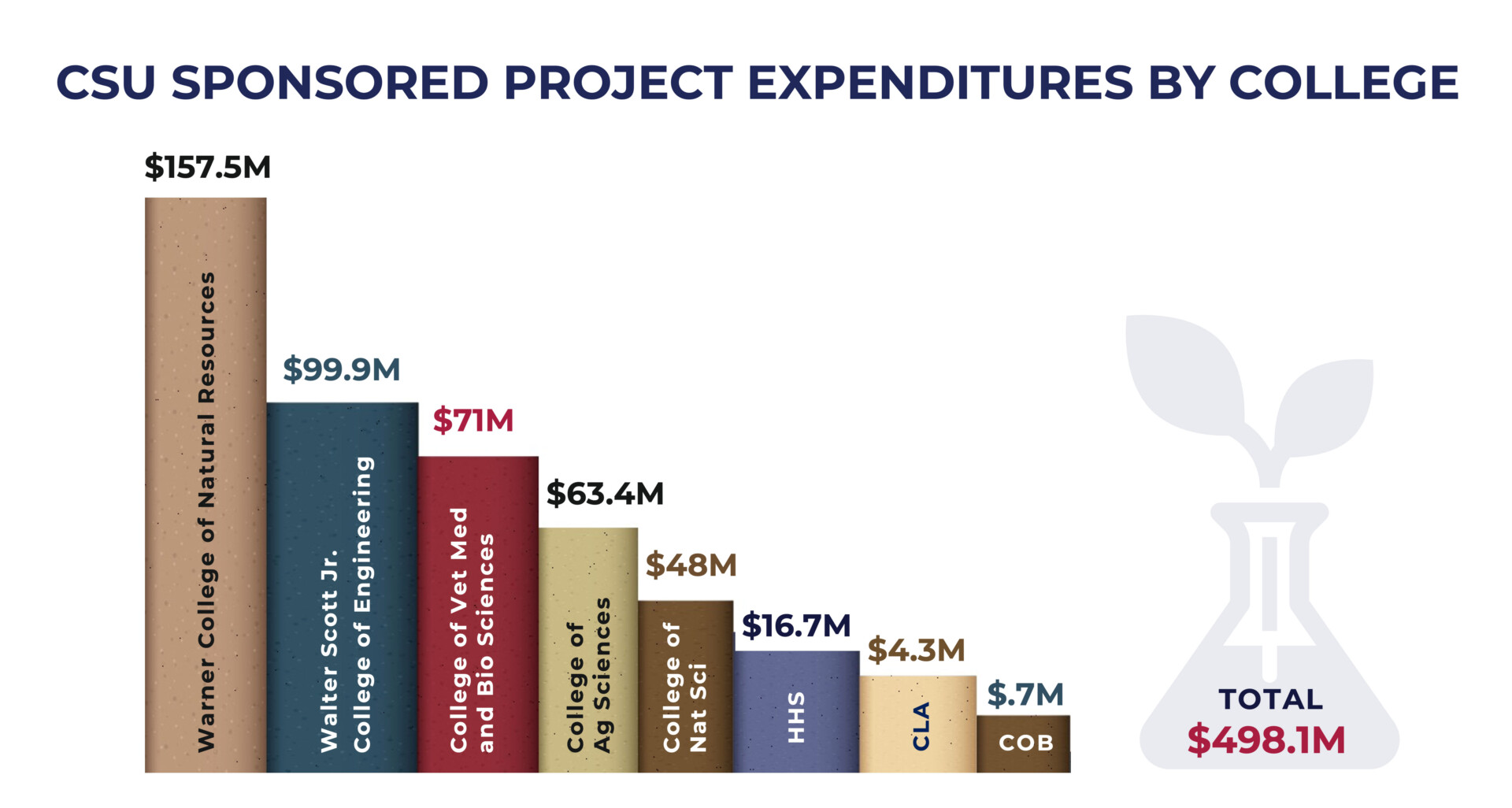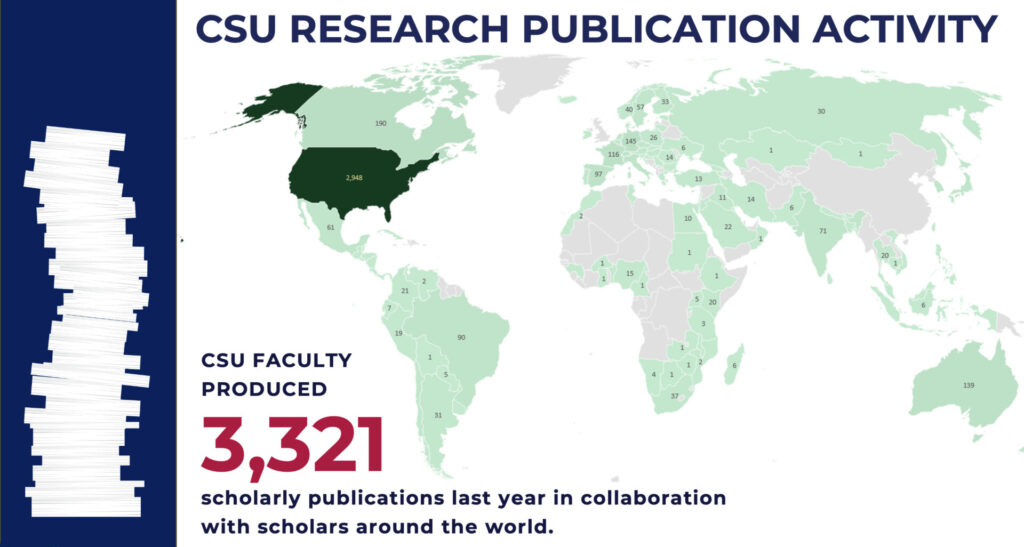 Colorado State University continues to see record-breaking numbers in sponsored project expenditures, edging close to a half-billion dollars with a total of $498.1 million in the last fiscal year.
Colorado State University continues to see record-breaking numbers in sponsored project expenditures, edging close to a half-billion dollars with a total of $498.1 million in the last fiscal year.
The university saw a $41.2 million, or 9%, increase over 2021-22. And as CSU searches for its next vice president for research, it enjoyed a 62% increase across the 10 years Alan Rudolph, Ph.D., served in that role.
“As a leading land-grant institution, research is core to CSU’s mission,” said CSU President Amy Parsons. “This success reflects the excellence of our faculty, staff and students, whose research achievements are taking on the world’s most urgent challenges and promising opportunities.”

Overall, the Warner College of Natural Resources continues to log the highest sponsored project expenditures, due to the resource conservation services provided by the Center for Environmental Management of Military Lands. CEMML accounts for $104.3 million, about 21%, of CSU’s sponsored program expenditures.
The Walter Scott, Jr. College of Engineering, College of Veterinary Medicine and Biomedical Sciences, and the College of Agricultural Sciences follow Warner, with $99.9 million, $71 million and $63.4 million, respectively.
Of the last year’s expenditures, 76.8% was funded by U.S. government agencies – up from 74.7%. The rest comes from state and local government, nonprofits, private industry and collaborations with other universities.
The federal landscape
As the University sets its sights on the future, administrators and scholars alike are paying close attention to the federal funding landscape.
The American Association for the Advancement of Science has said that any decline in Congressional appropriations to federal funding agencies impacts the nation’s research and development engines. Decreased resources result in fewer innovations, fewer jobs, less agility and reduced gross domestic product.

“The federal investment to support research and development is critical to basic and applied research in fields from medicine to climate to energy – all areas where CSU researchers excel in driving innovation,” said Gavin Clingham, Partner and Senior Vice President of Policy & Government Relations at Woodberry Associates. “The current budget debate is putting pressure on that investment, but it will remain significant and likely very similar to recent funding levels. Recent legislative packages such as the Inflation Reduction Act and the CHIPS and Science Act have added billions in funding for climate, energy and computing research that CSU is competing to secure.”
The Fiscal Responsibility Act, signed into law as a debt-ceiling compromise, keeps discretionary totals only slightly below this year’s levels. Total R&D appropriations are estimated to decrease by 4% overall based on the House budget that passed the Appropriations Committee in August.
This is not a new challenge. The University is poised to weather political storms and adapt with the ebb and flow of government resources for research and development. Administrators, researchers and faculty are no strangers to the process of securing federal funding. That experience and the value and impact of the work they do will enable CSU to navigate reductions and maintain its collective research trajectory.
Diversifying the research portfolio
CSU actively works to catalyze and sustain impactful collaborations with industry and other private partners.
“CSU continues to grow stronger collaborative research relationships with industry that in turn are giving our corporate partners more meaningful access to both our research faculty and our student talent pool,” Assistant Vice President for Research Translation and Commercialization David Paterson said.
Examples of such partnerships include the coming Marvel Fusion laser facility, and ongoing work with organizations like Zoetis, Nutrien Ag Solutions and Woodward Inc..
Zoetis is the world’s largest animal health company, developing vaccines, drugs and medical devices and working with veterinarians and suppliers around the globe to enhance animal care.
The company operates a large research lab on CSU’s Foothills Campus in the Research Innovation Center, and many of its staff are Ram alums. This connection enables a direct path for CSU students seeking to engage in research that improves animal lives, from internships to staff positions.
Industry partnerships across campus enhance opportunities for high-quality, collaborative and innovative research, setting up the University and its partners for long-term success.
“We are confident the University will continue to grow its research portfolio investigating and innovating in service to our land-grant mission, our communities and the globe,” Interim Vice President for Research Christa Johnson said. “CSU’s research community will continue to expertly navigate changing landscapes and celebrate big wins along the way.”
